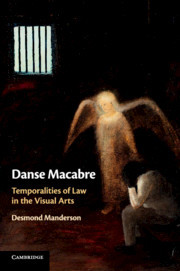Description
Danse Macabre
Temporalities of Law in the Visual Arts
Author: Manderson Desmond
A revolutionary approach exploring legal themes such as justice, legitimacy, sovereignty, and power through close readings of major works of art.
Language: English
Subject for Danse Macabre:
Approximative price 32.87 €
In Print (Delivery period: 14 days).
Add to cart
Danse Macabre
Publication date: 12-2020
Support: Print on demand
Publication date: 12-2020
Support: Print on demand
Approximative price 120.27 €
In Print (Delivery period: 14 days).
Add to cart
Danse Macabre
Publication date: 04-2019
306 p. · 15.6x23.5 cm · Hardback
Publication date: 04-2019
306 p. · 15.6x23.5 cm · Hardback
Description
/li>Contents
/li>Biography
/li>
The visual arts offer refreshing and novel resources through which to understand the representation, power, ideology and critique of law. This vibrantly interdisciplinary book brings the burgeoning field to a new maturity through extended close readings of major works by artists from Pieter Bruegel and Gustav Klimt to Gordon Bennett and Rafael Cauduro. At each point, the author puts these works of art into a complex dance with legal and social history, and with recent developments in legal and art theory. Manderson uses the idea of time and temporality as a focal point through which to explore how the work of art engages with and constitutes law and human lives. In the symmetries and asymmetries caused by the vibrating harmonic resonances of these triple forces - time, law, art - lies a way of not only understanding the world, but also transforming it.
Foreword; 1. Bruegel's 'Justice': anachronic time; 2. Reynolds's justice, Blackstone's laws: diachronic time; 3. Governor Arthur's proclamation: utopian time; 4. Turner's 'Slave Ship': now time; 5. Klimt's 'Jurisprudence': suspended time; 6. Bennett's laws: colonial time; 7. Cauduro's crimes: ectoplasmic time; Afterword.
Desmond Manderson is a Fellow of the Royal Society of Canada and Professor in the Australian National University, Canberra College of Law and the ANU College of Arts and Social Sciences at the Australian National University. He is the author of several books including Songs without Music (2000), Kangaroo Courts and the Rule of Law (2012), and Law and the Visual: Representations, Technologies, and Critique (2017).
© 2024 LAVOISIER S.A.S.




